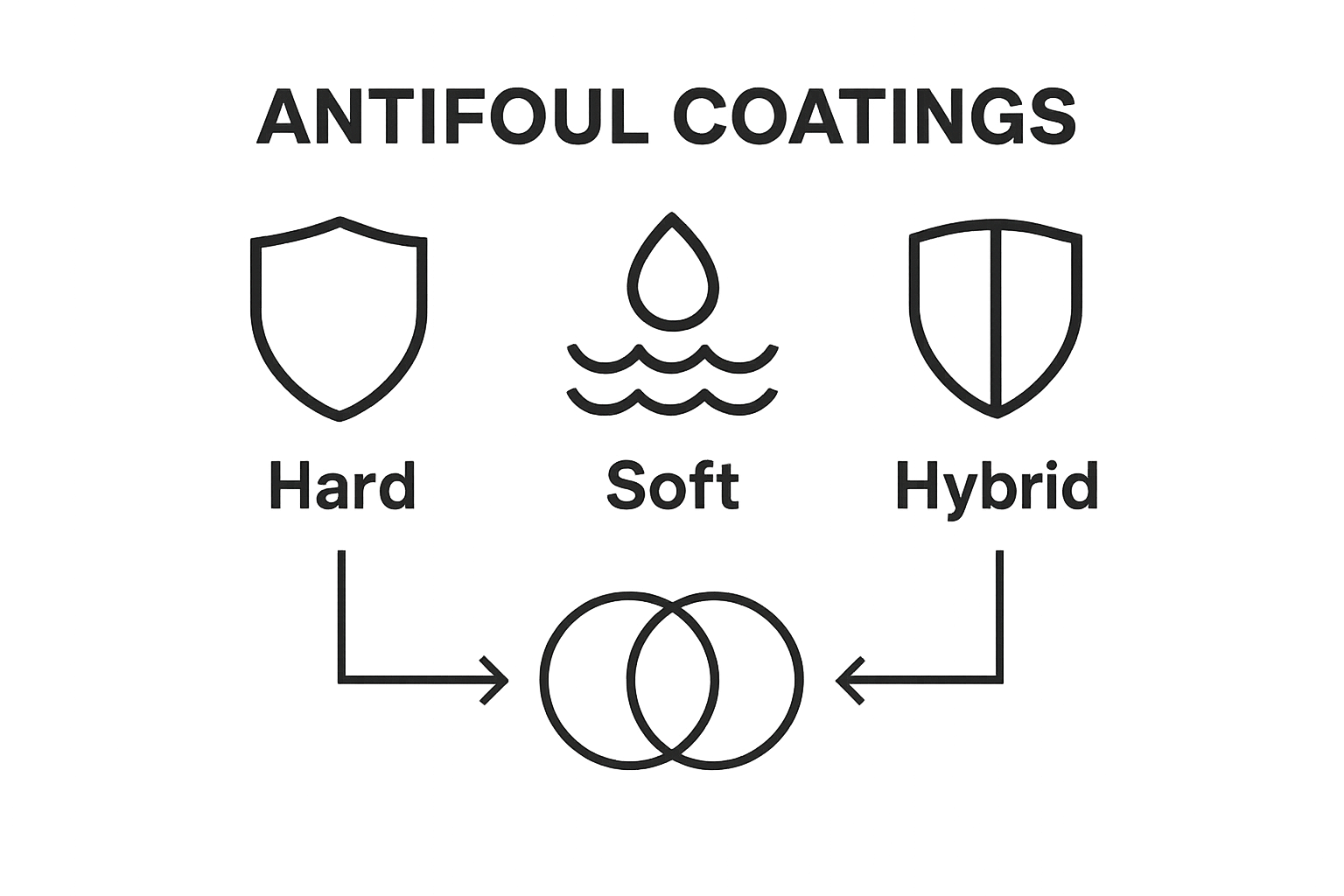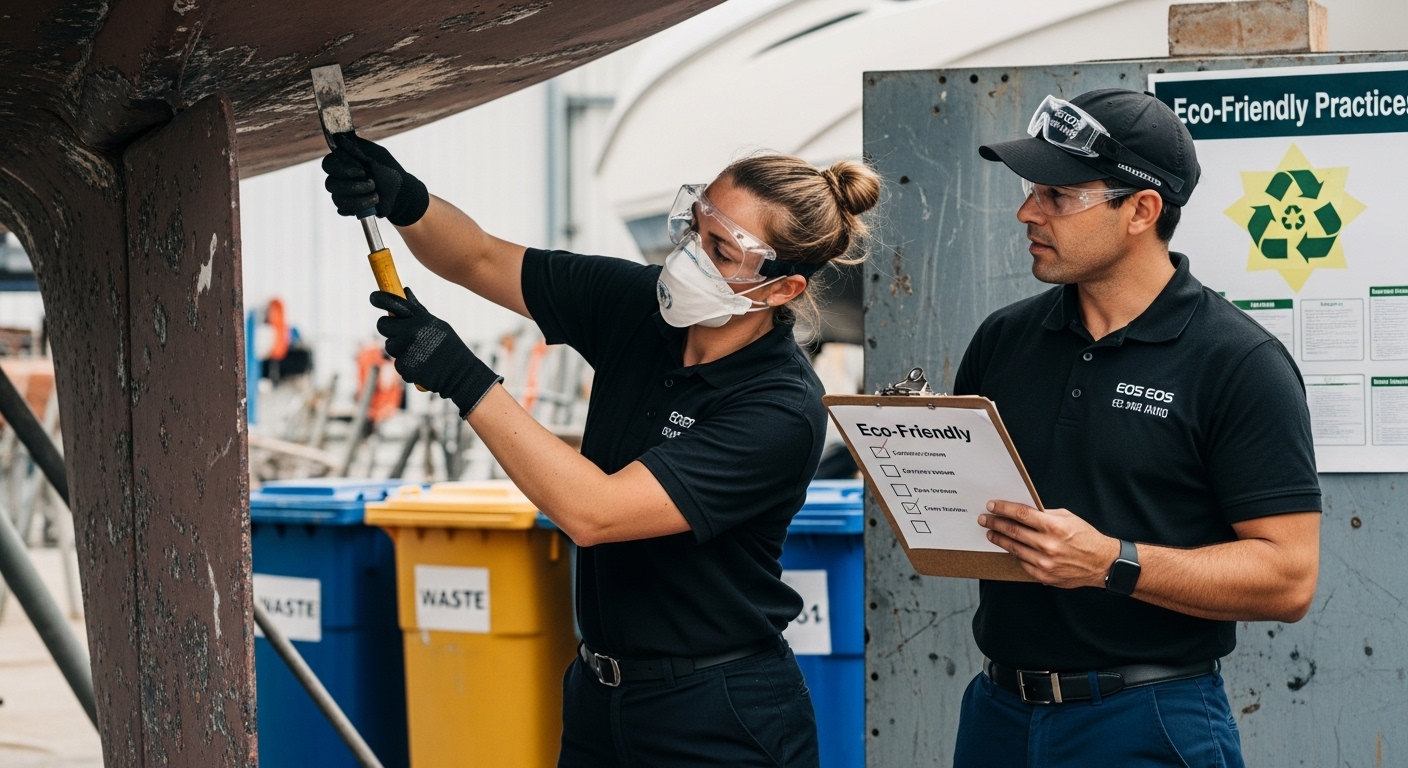Understanding Antifoul Removal: A Comprehensive Guide
- andy80165
- Sep 21
- 8 min read

Boat owners know marine growth can ruin performance and eat up fuel fast. Marine biofouling can push fuel consumption up by as much as 40 percent. That sounds like a nightmare but here comes the curveball. The real secret to keeping your vessel running smooth and saving serious money starts with understanding antifoul removal not just the coatings themselves.
Table of Contents
Quick Summary
What is Antifoul and Why is it Used?
Antifoul represents a specialized marine protective coating designed to prevent unwanted marine organism growth on boat hulls and underwater surfaces. Understanding antifoul removal starts with comprehending its fundamental purpose: protecting vessels from biological interference and maintaining optimal marine performance.
The Science Behind Antifoul Protection
Boat owners face a persistent challenge with marine organisms like algae, barnacles, and other microorganisms that naturally attach themselves to underwater surfaces. These organisms create significant drag, reduce vessel efficiency, and can cause substantial damage to boat hulls over time. Antifoul paint contains specialized chemical compounds that actively discourage marine life from establishing permanent attachments.
According to Australian Maritime Safety Authority, marine biofouling can increase vessel fuel consumption by up to 40% and dramatically reduce overall performance. The strategic application of antifoul creates an inhospitable environment for these organisms, essentially acting as a protective barrier.
Types of Marine Biofouling Prevention
Antifoul technologies can be categorized into several primary approaches

:
Hard Antifoul Coatings: Create a rigid surface that makes attachment difficult
Soft Antifoul Systems: Release biocidal compounds that actively repel marine organisms
Hybrid Antifoul Solutions: Combine multiple protective mechanisms
These specialized coatings work through different chemical interactions, preventing marine life from establishing permanent colonies on boat surfaces.
Below is a table comparing the primary types of antifoul coatings, summarizing their core features and protective mechanisms as discussed in the article.
For boat owners, understanding antifoul removal is crucial for maintaining vessel performance, reducing long-term maintenance costs, and ensuring environmental compliance with marine regulations.
The Importance of Antifoul Removal for Boat Maintenance
Antifoul removal is a critical maintenance procedure that extends far beyond simple cosmetic upkeep. For boat owners, understanding the strategic importance of regular antifoul removal can mean the difference between optimal vessel performance and potentially costly marine repairs.
Performance and Efficiency Impacts
Over time, marine organisms accumulate on boat hulls, creating layers of biological buildup that significantly impede vessel performance. Accumulated marine growth increases hydrodynamic drag, which directly translates to reduced speed, higher fuel consumption, and diminished overall vessel efficiency. Professional marine engineers estimate that even a thin layer of marine organisms can increase fuel consumption by up to 40%, representing a substantial economic burden for boat owners.
According to Maritime Safety Queensland, regular antifoul removal is essential for maintaining vessel integrity and performance. The process involves carefully stripping old antifoul coatings and preparing surfaces for new protective treatments.
Long Term Vessel Protection Strategies
Effective antifoul removal involves more than just aesthetic considerations. The process serves multiple critical protective functions:
Hull Structural Integrity: Preventing marine organism attachment prevents potential corrosion and structural damage
Environmental Compliance: Removing outdated antifoul coatings helps minimize potential ecological contamination
Performance Optimization: Clean hull surfaces reduce drag and improve overall vessel efficiency
Discover why renewing your boat’s antifoul coating is crucial for long-term maintenance, as proper removal and reapplication can significantly extend your vessel’s operational lifespan.
Proactive boat maintenance through systematic antifoul removal represents a strategic investment in your marine asset, ensuring consistent performance, preventing potential damage, and maintaining the vessel’s value over time.
How Antifoul Works and the Science Behind It
Antifouling technology represents a sophisticated marine engineering solution designed to prevent marine organism attachment through complex chemical and physical interactions. The science behind antifoul is rooted in creating surfaces that actively discourage biological colonization while maintaining vessel performance and structural integrity.
Chemical Composition and Interaction Mechanisms
Antifoul coatings utilize specialized biocidal compounds that create an inhospitable environment for marine organisms. These chemical formulations work through multiple mechanisms, including releasing toxic substances that prevent organism settlement, creating surface textures that make attachment difficult, and generating electrochemical reactions that disrupt biological adhesion processes.
The primary objective of antifoul technology is to interrupt the natural marine organism attachment cycle. Specialized polymers and metallic compounds within the coating create a dynamic surface that continuously resists biological colonization. Hydrophobic and biorepellent properties play a crucial role in preventing marine life from establishing permanent attachments to boat hulls.
According to Australian Maritime Safety Authority, effective antifoul technologies must balance environmental safety with performance optimization.
Key Scientific Principles of Antifoul Functionality
The scientific approach to antifoul development involves several critical principles:
Surface Energy Modification: Altering molecular surface characteristics to reduce organism attachment
Biocidal Release Mechanisms: Controlled release of compounds that prevent marine organism settlement
Electrochemical Deterrence: Creating surface conditions that disrupt biological adhesion processes
Learn more about the comprehensive antifouling lifecycle for marine vessels, which provides deeper insights into the technological advancements in marine protection.
Understanding the intricate science behind antifoul technologies reveals a complex interplay of chemistry, materials engineering, and marine biology, ultimately protecting vessels from the persistent challenge of marine organism colonization.
Challenges and Considerations in Antifoul Removal
Antifoul removal represents a complex marine maintenance procedure that demands careful planning, specialized knowledge, and meticulous execution. Boat owners must navigate multiple technical and environmental challenges to ensure effective and responsible antifoul management.
Environmental and Safety Implications
Environmental protection is paramount during antifoul removal. The process involves handling potentially toxic chemical compounds that can cause significant ecological damage if not managed appropriately. Specialized protective equipment and controlled workspace environments are essential to mitigate risks associated with chemical exposure and marine ecosystem contamination.
The chemical composition of antifoul coatings varies widely, presenting unique challenges for removal. Some older antifoul systems contain legacy compounds like tributyltin (TBT), which require extremely careful handling and disposal. Modern removal techniques must balance effectiveness with environmental responsibility, ensuring minimal ecological disruption.
According to Australian Maritime Safety Authority, professional antifoul removal demands comprehensive understanding of marine environmental protection protocols.
Technical Complexity and Risk Management
Antifoul removal involves multiple critical considerations that boat owners must carefully evaluate:
Surface Integrity: Preventing hull damage during coating removal
Chemical Compatibility: Understanding interactions between different coating types
Environmental Compliance: Adhering to strict marine protection regulations
Professional Expertise: Recognizing when specialized intervention is necessary
Learn more about choosing the right antifoul solution for your specific boat requirements, which can help minimize potential removal challenges.
Successful antifoul removal requires a holistic approach that integrates technical skill, environmental awareness, and strategic planning to protect both vessel performance and marine ecosystems.
The following table outlines the key challenges and considerations boat owners face during antifoul removal, organizing the main points from the relevant section for clarity.
Eco-Friendly Practices in Antifoul Removal
Eco-friendly antifoul removal represents a critical approach to marine maintenance that balances vessel performance with environmental stewardship. As marine ecosystems become increasingly vulnerable, boat owners must adopt sustainable practices that minimize ecological impact while effectively managing vessel maintenance.
Sustainable Removal Techniques
Modern antifoul removal strategies prioritize environmental protection through innovative techniques that reduce chemical exposure and minimize marine ecosystem disruption. Advanced technologies now enable boat owners to remove protective coatings with minimal ecological footprint, utilizing specialized equipment and environmentally conscious methodologies.
The shift towards sustainable antifoul removal involves selecting low toxicity removal agents, implementing controlled workspace environments, and utilizing precision techniques that prevent unnecessary chemical dispersion. Boat owners must consider the long term environmental consequences of their maintenance practices, focusing on methods that protect marine biodiversity and water quality.
According to Australian Maritime Safety Authority, responsible marine maintenance requires comprehensive understanding of ecological preservation protocols.
Key Environmental Considerations
Successful eco-friendly antifoul removal encompasses several critical environmental management principles:
Controlled Chemical Disposal: Preventing toxic compound release into marine environments
Minimal Habitat Disruption: Reducing potential damage to marine ecosystems
Sustainable Material Selection: Choosing environmentally responsible removal technologies
Comprehensive Waste Management: Implementing rigorous containment and treatment protocols
Learn more about understanding different antifoul technologies and their environmental implications, which can help boat owners make more informed ecological choices.
Eco-friendly antifoul removal is not just a technical process but a commitment to preserving marine environments while maintaining vessel performance and longevity.

Ready for Trouble-Free Antifoul Removal and Long-Term Boat Protection?
Are you worried about the hidden problems caused by marine growth, stubborn antifoul buildup, or the risk of damaging your boat hull? This article highlights how complex and critical proper antifoul removal is for preserving your vessel’s performance and value. With environmental concerns and technical challenges at stake, you deserve the peace of mind that comes with expert care.

Leave the tough work to the professionals at Lightning Boat Builders. We provide mobile marine services, specializing in safe, eco-friendly antifoul removal, detailed boat maintenance, and custom fiberglass work to help you avoid costly mistakes and protect both your investment and the marine environment. Learn more about our antifoul solutions and discover how a renewed antifoul coating extends your boat’s life. Take action now by visiting https://lightningboatbuilders.com. Schedule your personalized marine service today and experience true performance on the water.
Frequently Asked Questions
What is antifoul and why is it used on boats?
Antifoul is a specialized marine coating designed to prevent marine organisms, such as algae and barnacles, from attaching to boat hulls. It protects vessels from biological interference, reduces drag, and maintains performance.
How often should antifoul removal be performed on a boat?
Antifoul removal should be performed regularly, depending on the marine environment and growth conditions. Generally, it is recommended to assess and remove antifoul coatings every 1-2 years to maintain optimal vessel performance and integrity.
What are the different types of antifoul coatings available?
There are three main types of antifoul coatings: hard antifoul coatings, which create a rigid surface; soft antifoul systems, which release biocidal compounds; and hybrid solutions that combine both approaches to prevent marine growth effectively.
What are the environmental considerations when removing antifoul?
When removing antifoul, it’s essential to manage potentially toxic chemical compounds responsibly. This includes ensuring controlled chemical disposal, minimizing habitat disruption, and adhering to ecological preservation protocols during the removal process.
Recommended
Comments